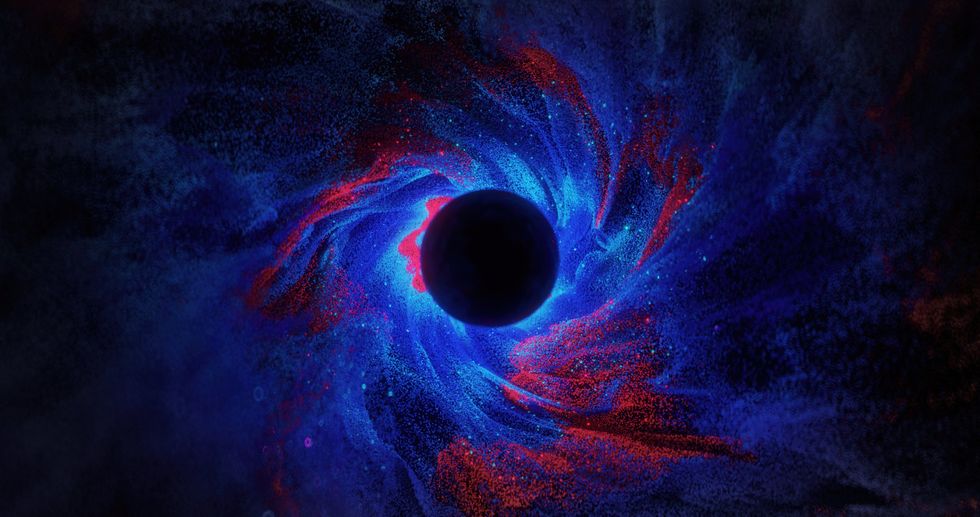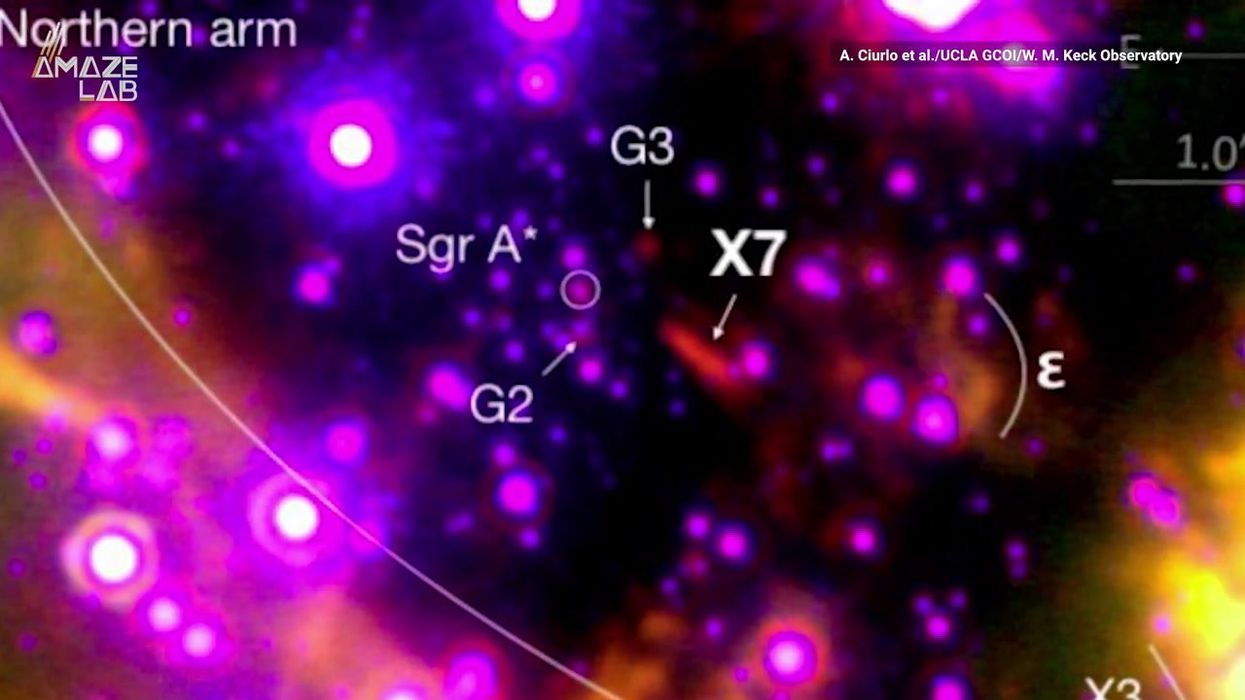Science & Tech
Harry Fletcher
Mar 30, 2023
A Mystery Object Being Dragged Into the Center of Our Galaxy Perplexes …
content.jwplatform.com
We don’t want to alarm you, but there’s a black hole pointing Earth squarely in the face.
Scientists have reclassified a galaxy after finding that the supermassive black hole in its centre has changed direction and it is now aiming right at us.
The galaxy in question is found 657 million light-years away from Earth, and goes by the catchy name of PBC J2333.9-2343.
“We started to study this galaxy as it showed peculiar properties. Our hypothesis was that the relativistic jet of its supermassive black hole had changed its direction, and to confirm that idea we had to carry out a lot of observations,” lead author of a new paper Dr Lorena Hernández-García of Millennium Institute of Astrophysics said.
Sign up to our new free Indy100 weekly newsletter
The study, which is published in the monthly notices of the Royal Astronomical Society, goes into detail about the change.
PBC J2333.9-2343 was previously classified as a giant radio galaxy because at one stage it sent out jet material on either side, which measures a mind-boggling four million lightyears across – around 40 times the size of our own galaxy.

It was quite a shock, then, when astronomers looked into PBC J2333.9-2343 and realised it was pointing right at us.
It means the galaxy has moved by a 90 degree angle, and it’s now a ‘blazar’ – which means a galaxy point which has jet points pointing at Earth.
The jet material from the black hole has created two huge lobes on either side of the galaxy, and they’re the most immediately notable thing when observed with radio waves.
“The fact that we see the nucleus is not feeding the lobes anymore means that they are very old. They are the relics of past activity, whereas the structures located closer to the nucleus represent younger and active jets,” Hernández-García went on to say.
It’s not exactly clear how this could have happened. One guess is that PBC J2333.9-2343 collided with another galaxy, which could explain how the angle of axis changed.
Have your say in our news democracy. Click the upvote icon at the top of the page to help raise this article through the indy100 rankings.
Top 100
The Conversation (0)














